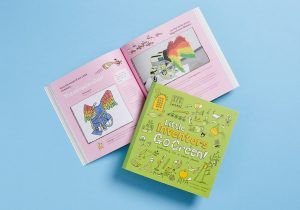
Hearing: Senses primary resource
Discover how microscopic hairs in our inner ear allow us to hear sound
This primary resource takes a look inside the human ear. Discover how we hear sound with the help of microscopic hairs in our inner ear. In what part of the inner ear are the hairs found? What makes the hairs move? Which organ are the electrical signals passed to?
Pupils will learn what happens inside the ear to make us hear in our National Geographic Kids’ Science primary resource sheet.
The teaching resource can be used in study group tasks for discussion about the sense of hearing. It could be used as a printed handout for each pupil to review and annotate, or for display on the interactive whiteboard for class discussion.
Activity: Display to the children the image in the resource sheet and challenge them to guess what they think it shows. Tell children that it is actually a photograph of inside the human ear, and read the text included on the page. Ask children to use the information from the resource to make a flow diagram that shows how the process of hearing takes place from sound moving into our inner ear to the brain ‘decoding’ the signal. Pupils could draw a table to list their favourite sounds and least favourite sounds within. What do they think would happen if these tiny hairs inside the ear were damaged?
N.B. The following information for mapping the resource documents to the school curriculum is specifically tailored to the English National Curriculum and Scottish Curriculum for Excellence. We are currently working to bring specifically tailored curriculum resource links for our other territories; including South Africa, Australia and New Zealand. If you have any queries about our upcoming curriculum resource links, please email: schools@ngkids.co.uk
This Science primary resource assists with teaching the following Key Stage 1 Science (Year 1) objective from the National Curriculum:
Pupils should be taught to:
- identify, name, draw and label the basic parts of the human body and say which part of the body is associated with each sense
National Curriculum Lower Key Stage 2 Science (Year 4) objectives:
Pupils should be taught to:
- identify how sounds are made, associating some of them with something vibrating
- recognise that vibrations from sounds travel through a medium to the ear
- find patterns between the volume of a sound and the strength of the vibrations that produced it
This Science primary resource assists with teaching the following Sciences Early level objectives from the Scottish Curriculum for Excellence:
- I can identify my senses and use them to explore the world around me.
Scottish Curriculum for Excellence Sciences First level objectives:
- I have explored my senses and can discuss their reliability and limitations in responding to the environment.
Scottish Curriculum for Excellence Sciences Second level objectives:
- I have explored the structure and function of sensory organs to develop my understanding of body actions in response to outside conditions.
Download primary resource
More Like

Little Inventors Go Green!

What it takes to train a penguin-protecting sheepdog – like Oddball!

Canada facts









LEAVE A COMMENT
THANK YOU
Your comment will be checked and approved shortly.
WELL DONE,
YOUR COMMENT
HAS BEEN ADDED!
COMMENTS
CUSTOMIZE YOUR AVATAR